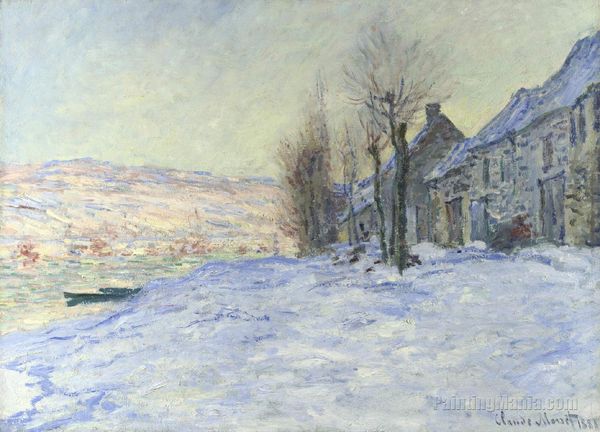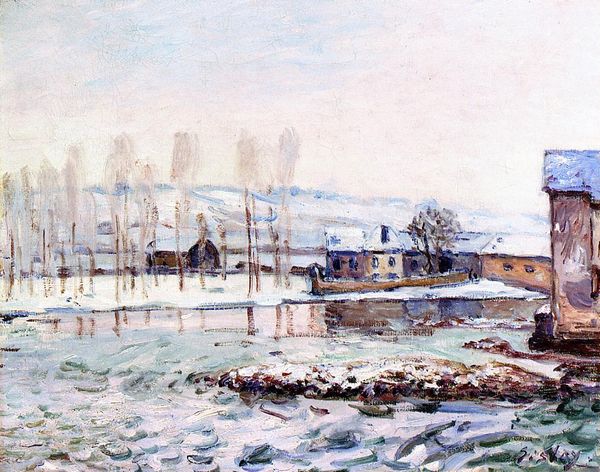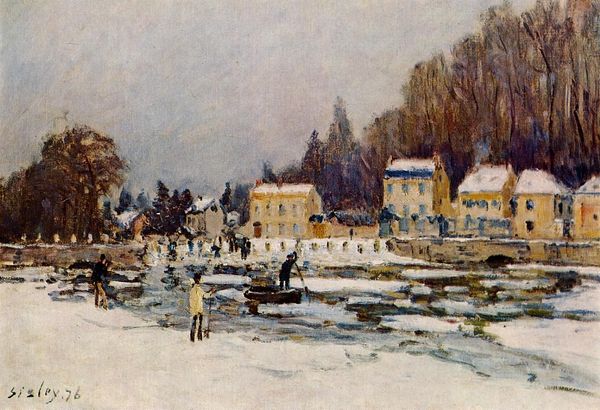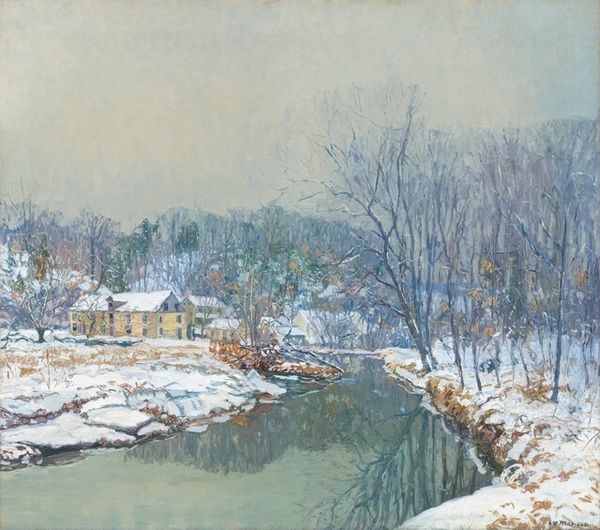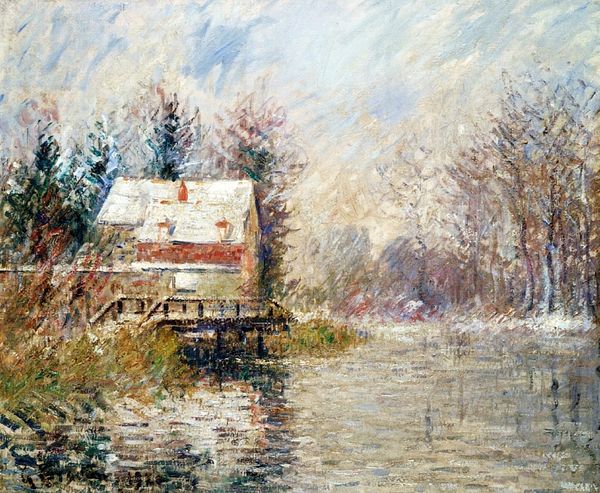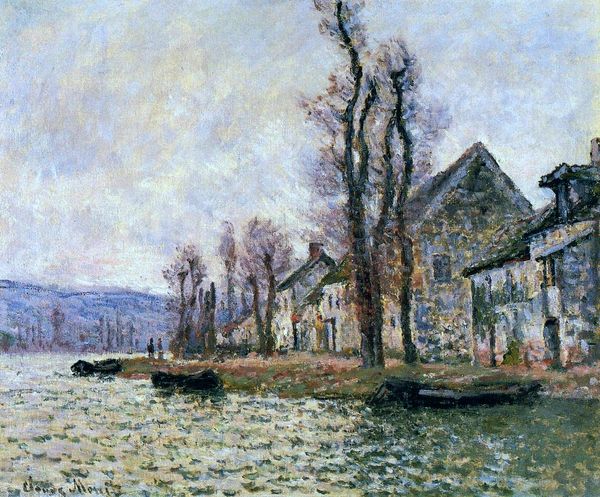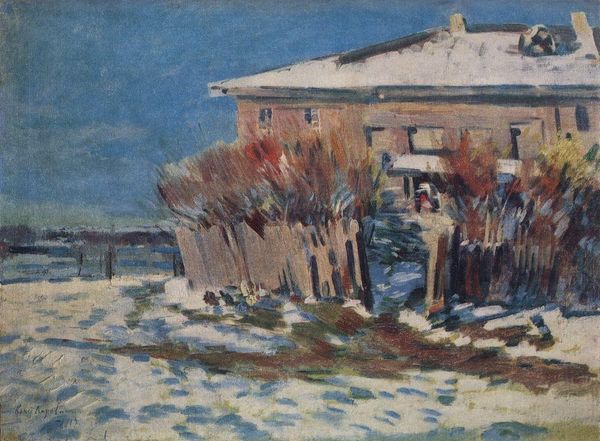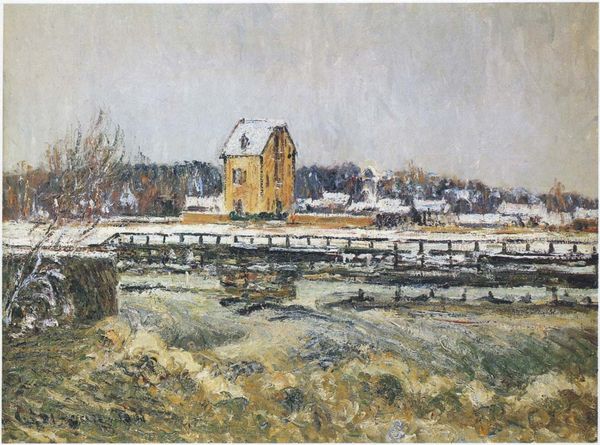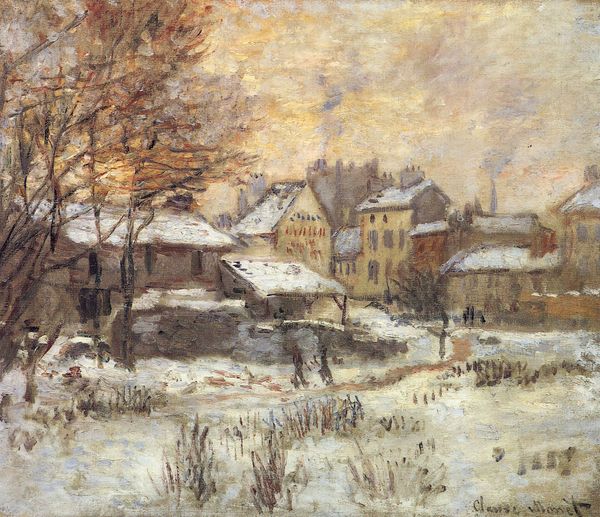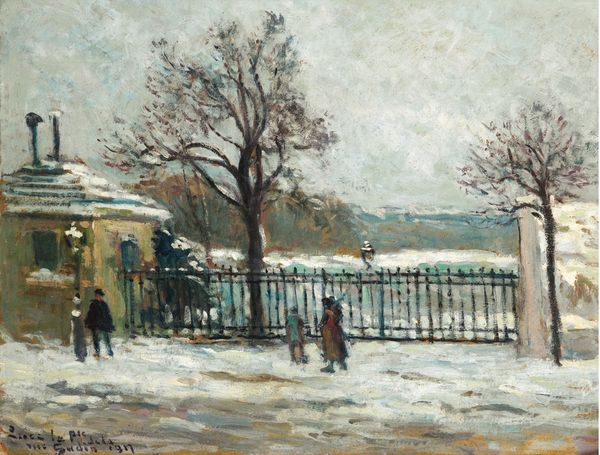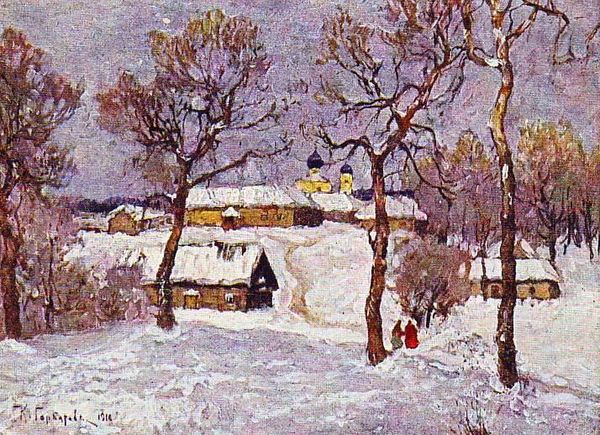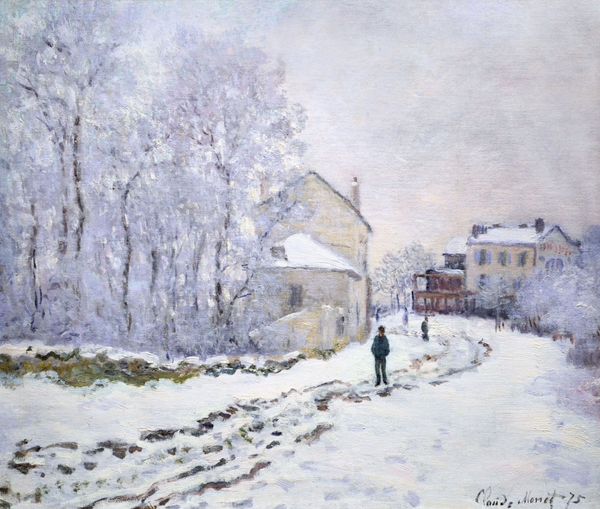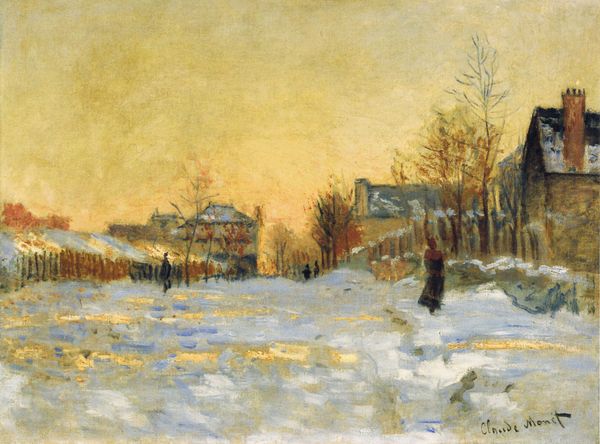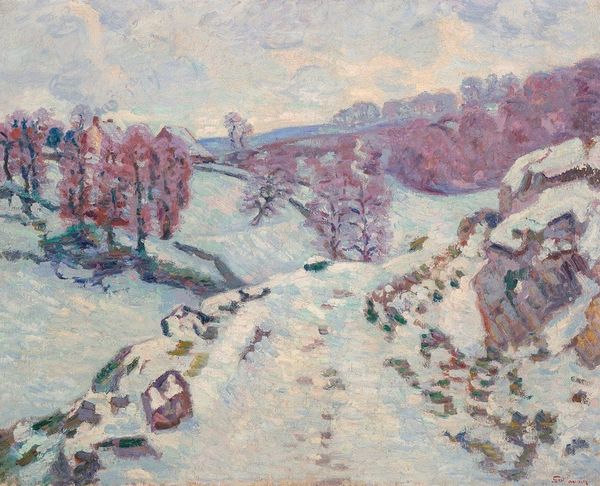
Dimensions: 49.5 x 65.4 cm
Copyright: Public domain
Editor: This is Alfred Sisley’s "The Watering Place at Marly le Roi in Winter," painted in 1875. The soft blues and yellows create such a tranquil, wintry atmosphere, despite being an oil painting, it feels airy. What do you see in this piece, beyond the landscape? Curator: For me, it’s about memory and cyclical return. The watering place itself is a recurring symbol of community and sustenance throughout art history. Here, buried under the snow, it hints at a dormant life, a promise of renewal after a period of dormancy. Sisley uses a specific palette - notice how even the shadows hold onto the light? Editor: Yes, I do see how the blues aren't cold, they’re almost hopeful. Are there other symbols in the piece? Curator: Look at the path leading away from the watering place, disappearing over the gentle hill. It suggests a journey, perhaps a spiritual one, away from the immediate concerns represented by the mundane tasks done at a watering place. Consider also the trees, bare and reaching towards the sky - emblems of resilience. They’ve withstood the winter and stand as stark reminders of time. Editor: So, the watering place is more than just a location; it's a representation of something larger? Curator: Precisely. It's about the cultural memory associated with these communal spaces, intertwined with the natural cycle of winter and spring, reflecting shared hopes for regeneration. How do you feel now, understanding the visual history contained within this imagery? Editor: It really opens up the painting. I now see a layer of meaning that wasn't immediately apparent – it's not just pretty, but full of historical weight. Curator: Exactly. It's a beautiful encapsulation of seasonal transformation and symbolic value in an ever-changing world.
Comments
No comments
Be the first to comment and join the conversation on the ultimate creative platform.
